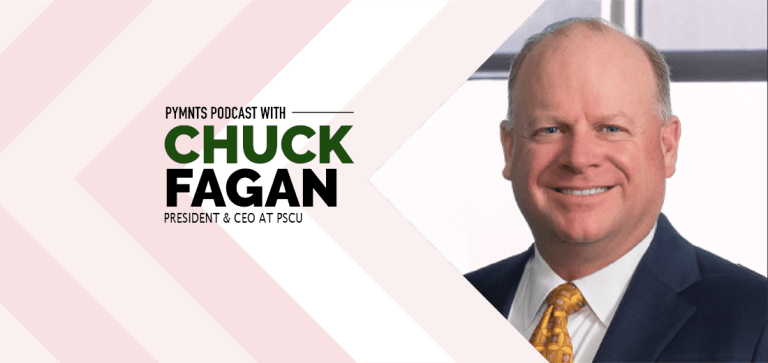
There are tough economies, and then there is the existential grappling, for consumers and small businesses alike, that is the hallmark of the COVID-19 pandemic.
In an interview with Karen Webster, Chuck Fagan, president and CEO of PSCU, said the very model of the credit union can help members navigate the seismic shifts of a historic economic downturn spurred by the coronavirus.
“Over the years we have certainly seen natural disasters,” he told Webster, “including hurricanes and fires. But these were isolated in terms of geography and the number of FIs that they hit.”
With a nod to the pandemic, he said, “this situation is just so broad — and you have the high unemployment rate and impact to consumers affecting credit in different ways.”
Though innovation — at least as measured in terms of current initiatives — has not slowed down, he told Webster that PSCU, and by extension credit unions (CUs) have had to adapt business models to be even more customized around the needs of end users.
Against that backdrop, said Fagan, CUs have pivoted to support members through a number of actions, such as pausing payments on various loans and credit instruments.
“Obviously, the real uncertainty comes in in 2021 because nobody really knows what those delinquency numbers and what the return is going to look like,” he said.
That caution about what is in store for 2021 is a far cry from even two months ago, when the coronavirus seemed like it might be short term in duration.
Looking out at the phased reopenings that are just beginning to take root in various states, Fagan said that as restaurants and retailers return to operations, because they must observe social distancing mandates, they will recapture only a small percentage of lost business. It will take a while before consumers venture out again in droves, a scenario that likely will not become reality until a vaccine is developed. As a result, he said, there will still be stress in the system that will be part of the landscape for a while.
Asked by Webster whether the “member-centricity” can in fact render CUs vulnerable, with relatively less diversified client bases than larger brethren, Fagan offered the example of a CU based in Las Vegas with a large percentage of members who work in casinos and are suddenly out of work as casinos shut down.
“When the industry really shut down, that credit union is probably in a much more difficult situation than others that have gone either community-based, or even in some cases, have multi-state territories that they’re working with,” said Fagan, who added that a CU with high reliance on, say, the oil and gas sector has likely been significantly impacted.
It is not too far-fetched to see a CU suddenly confronted with the fact that 15 percent of its membership roster may be dealing with unemployment and figuring out whether they should invest their stimulus package funds.
For those CUs, said Fagan, marked by what he termed a “single sponsor type relationship,” where the sponsor has been devastated by the pandemic, relying on FICO scores is an inefficient way of gauging credit risk.
Here, then, is where data and predictive analytics become critical, where PSCU or other partners provide insight that can help CUs become proactive toward their membership and work on engaging with individuals.
Fagan said one avenue of contact between members and CUs that has seen a huge uptick has been contact centers, where volumes have surged by triple-digit percentages.
That is due in part to the fact that CUs have shut branches or made in-person visits for those locations that are open by appointment only. In the meantime, digital banking has gained traction, and PSCU has been providing spend volumes and trends on a weekly basis to CUs to help them make strategic decisions.
At a time when interchange is down by more than 20 percent, he said, CUs have to make contingency plans to protect the assets on the books and their bottom lines, especially if a V-shaped economic recovery proves elusive.
As for current spending trends, Fagan noted, “If the consumer is using debit, then clearly they have current funds available. And we have seen upticks in debit, while credit is still down more than 20 percent.”
There may be green shoots growing though, as credit has shown five consecutive weeks of growth. There has also been growth in physical deposits at ATMs, which may tie in with the paper checks that members have received if they did not have direct deposit data on file with the government when stimulus payouts took place.
Many of the digital habits credit union members have adopted over the past eight weeks will stick, said Fagan. Contactless is here to stay, for example.
But there likely will be a niche for brick-and-mortar financial services too, he told Webster.
“I do see reduced traffic in the branch that would be more specific to life-changing events such as buying a home, college education, retirement planning, and those kinds of things where you really kind of need that personal interaction,” he said.
The pandemic has accelerated the pace of change, said Fagan, who said that when FIs would previously examine banking platforms and expanding new offerings, they would look out over the next 20 years. With the rise of digital banking, that timeframe has been shortened to five years.
“When you identify new types of member behavior,” he told Webster, “you get a much better view of what they’re going through and how you can support them.”